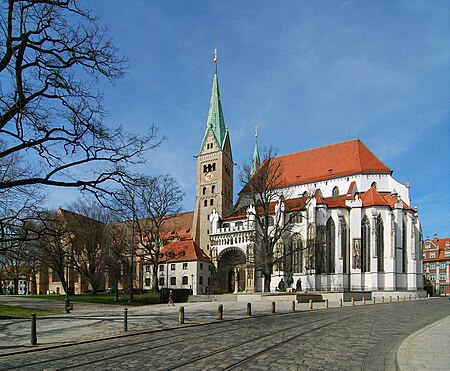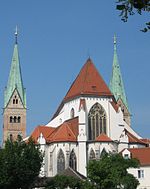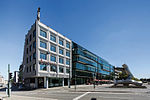Augsburg Cathedral
Buildings and structures completed in the 11th centuryBuildings and structures completed in the 14th centuryBuildings and structures in AugsburgChurches in AugsburgRoman Catholic cathedrals in Bavaria ... and 1 more
Romanesque architecture in Germany

The Cathedral of Augsburg (German: Dom Mariä Heimsuchung) is a Catholic cathedral in Augsburg, Bavaria, Germany, founded in the 11th century in Romanesque style, but with 14th-century Gothic additions. Together with the Basilica of St. Ulrich and Afra, it is one of the city's main attractions. It measures 113 x 40 m, and its towers are 62 m high. It is dedicated to the Visitation of Virgin Mary.
Excerpt from the Wikipedia article Augsburg Cathedral (License: CC BY-SA 3.0, Authors, Images).Augsburg Cathedral
Frauentorstraße, Augsburg Innenstadt
Geographical coordinates (GPS) Address Website External links Nearby Places Show on map
Geographical coordinates (GPS)
| Latitude | Longitude |
|---|---|
| N 48.372777777778 ° | E 10.896666666667 ° |
Address
Dom Mariä Heimsuchung (Augsburger Dom;Hoher Dom;Dom St. Maria)
Frauentorstraße 1
86152 Augsburg, Innenstadt
Bavaria, Germany
Open on Google Maps









